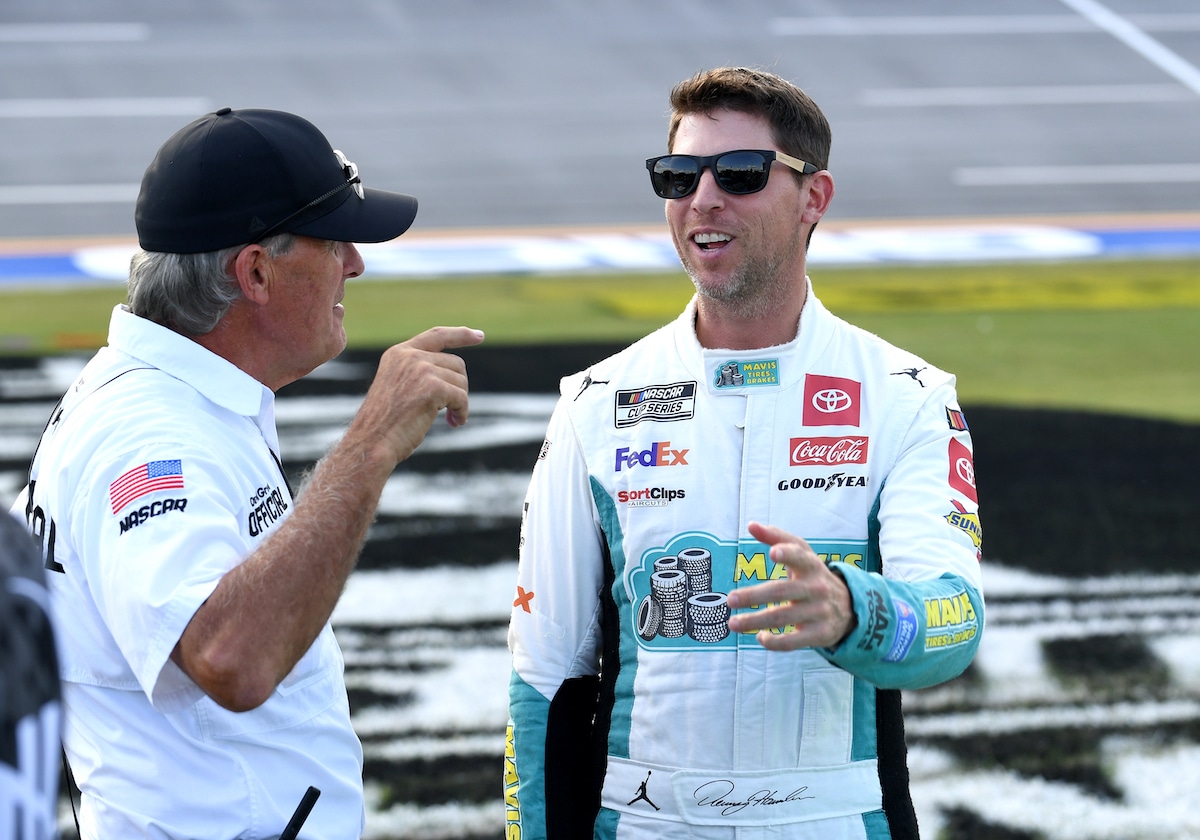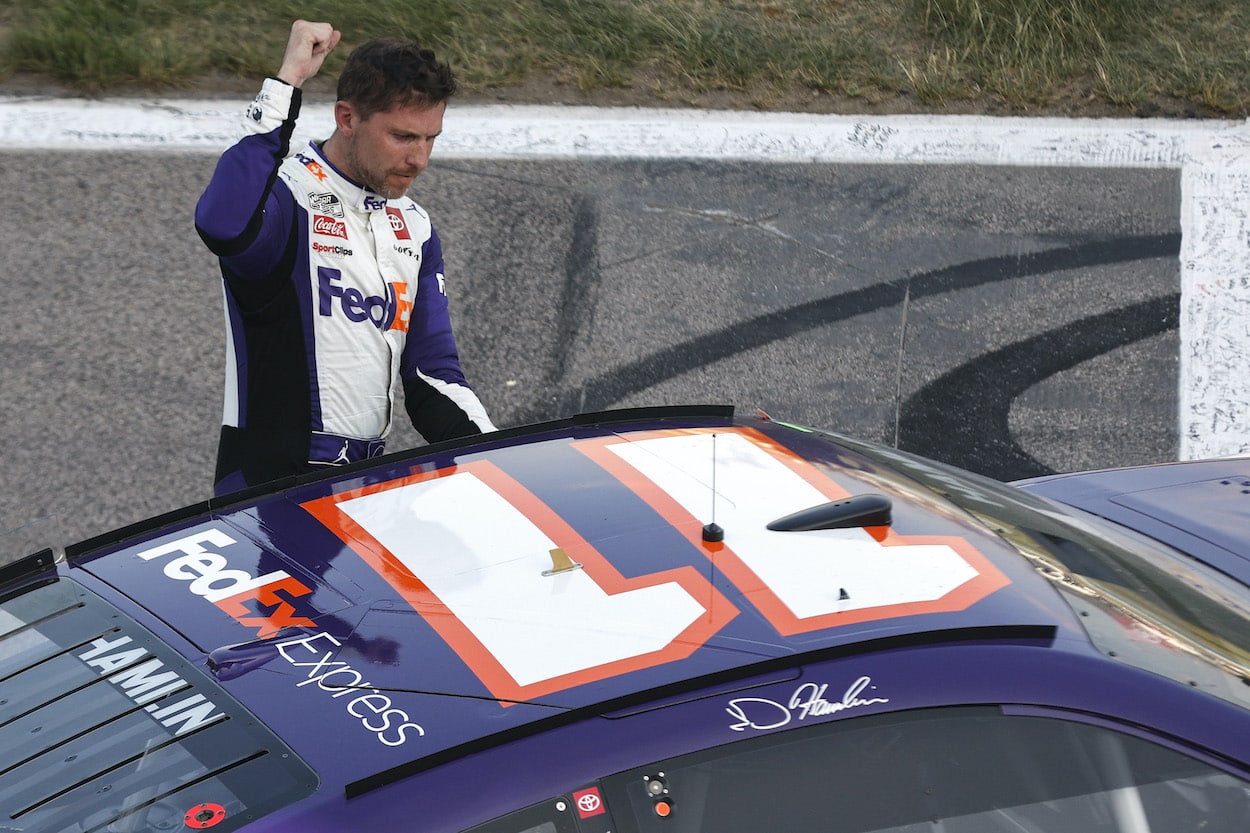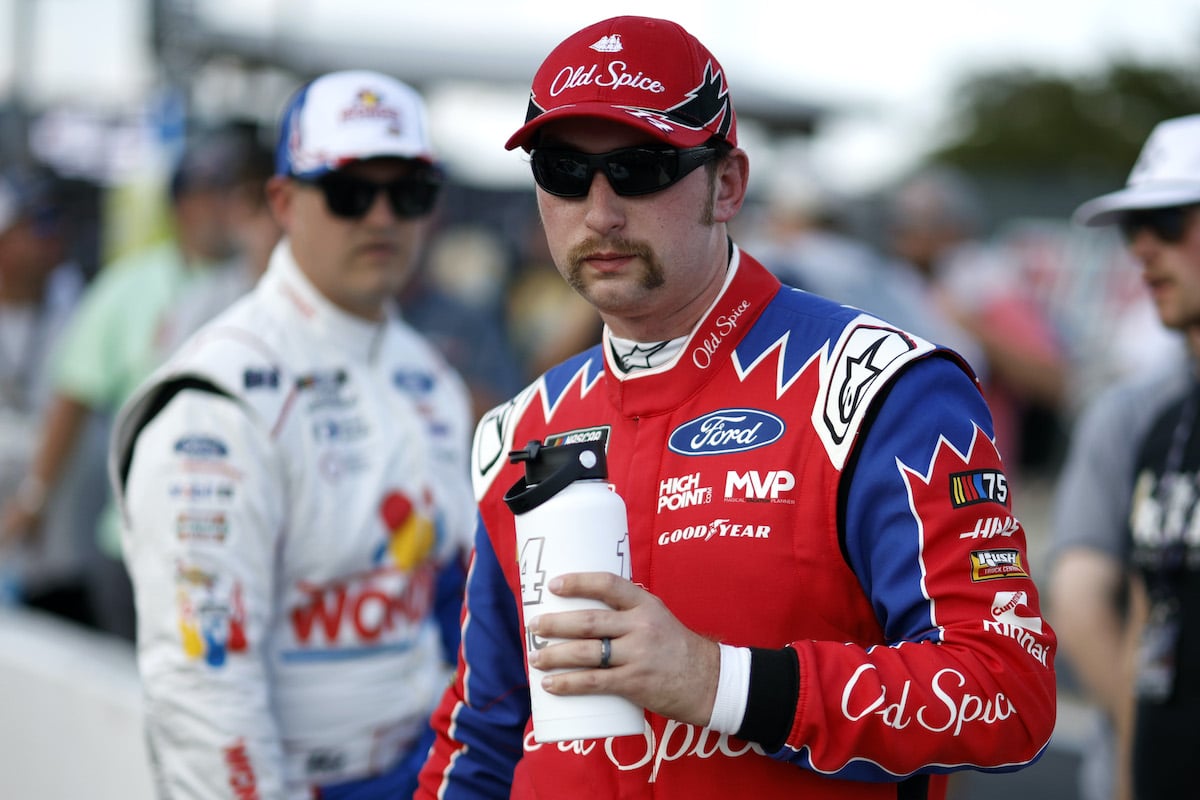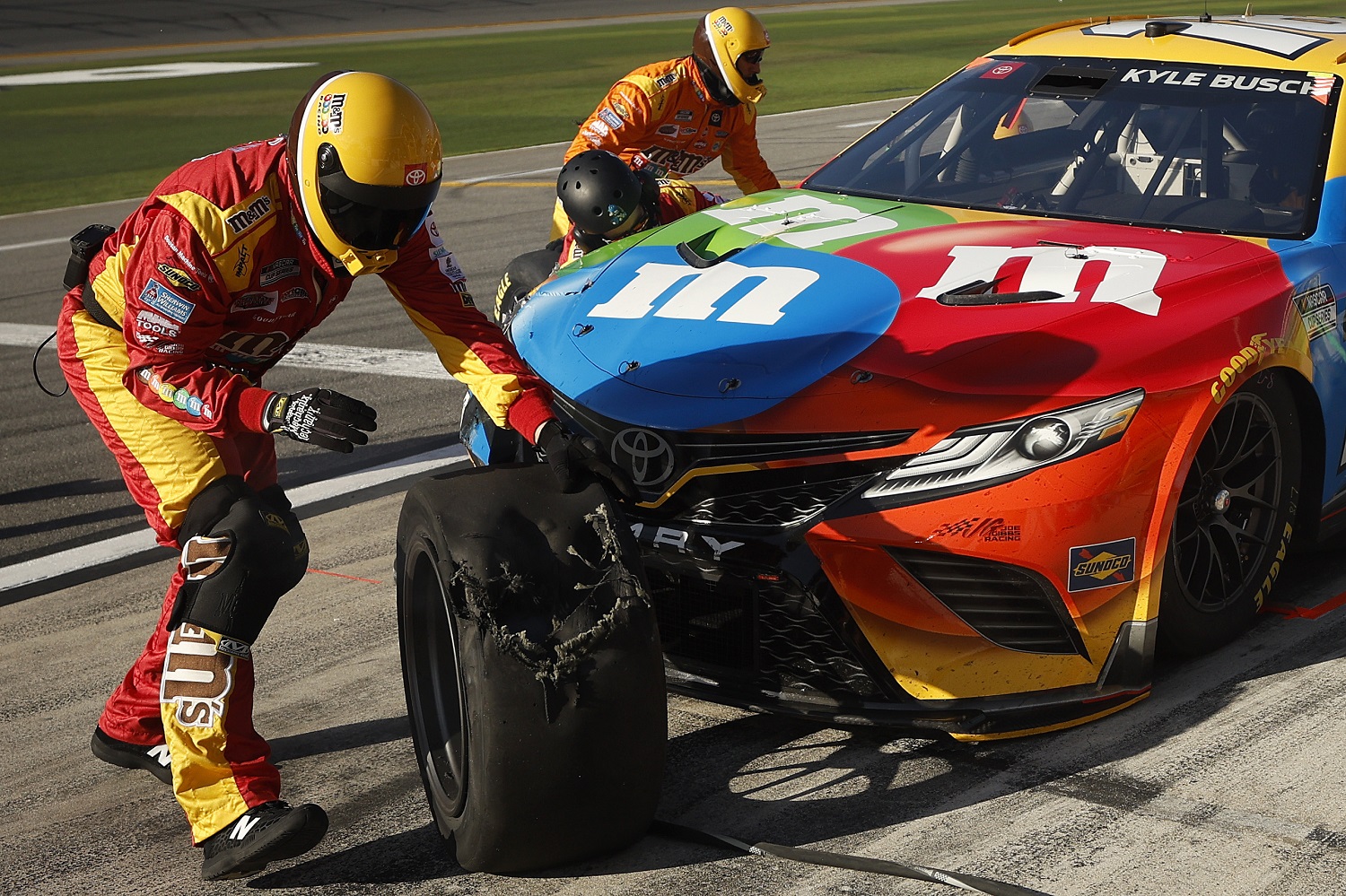
NASCAR Has Squandered Its Busch Light Clash Boost and Fallen Flat on Its Face Over Tire Woes
Given the challenges that most sports face with television ratings, NASCAR can deal with the continued slippage in viewership. The proliferation of streaming and the oversaturation of sports on TV have diluted the audience for all networks over time.
No, NASCAR’s problem isn’t an audience that’s slipping away nor one that’s aging out. Instead, the sport’s executives should worry about fans they drive away because the new Next Gen cars cannot be driven out of the infield grass once tires go down.
No one with a collection of Kyle Busch diecasts next to the TV set or with a $50 wager on Christopher Bell to win wants to see their favorite driver go three laps down while getting towed back to the pits and then lose another lap while the crew deals with the damage.
Yet, that’s what is happening in the early going of the Cup Series season, and the problem only gets bigger once the tracks get smaller.
NASCAR has handed down an edict for the Cup Series race in Las Vegas
NASCAR Cup Series drivers will stay in their cars while being towed back to the Las Vegas Motor Speedway pits if flat tires leave the Next Gen vehicles incapacitated, officials announced this week. NASCAR established the policy last week at Fontana. It’s not a solution to the underlying problem, but it’s the best they can offer to address an embarrassing situation.
In a typical scenario, a driver ruins rubber by spinning out while trying to avoid a wreck. Even if he remains on the pavement, the driver is hard-pressed to drive back to the pits because the new car sits so low to the ground. If the spinout ends in the infield and a rear tire has gone down, he has zero chance of extricating himself from the grass because the wear blocks dig into the soil.
Austin Dillon worries about drivers making a dangerous decision upon seeing a crash unfold ahead. In short, they may be doing risk analysis at 150 mph that says it’s better to try driving through the carnage than ducking down low and risking a spin that shreds tires.
The problem gets bigger as the tracks get smaller
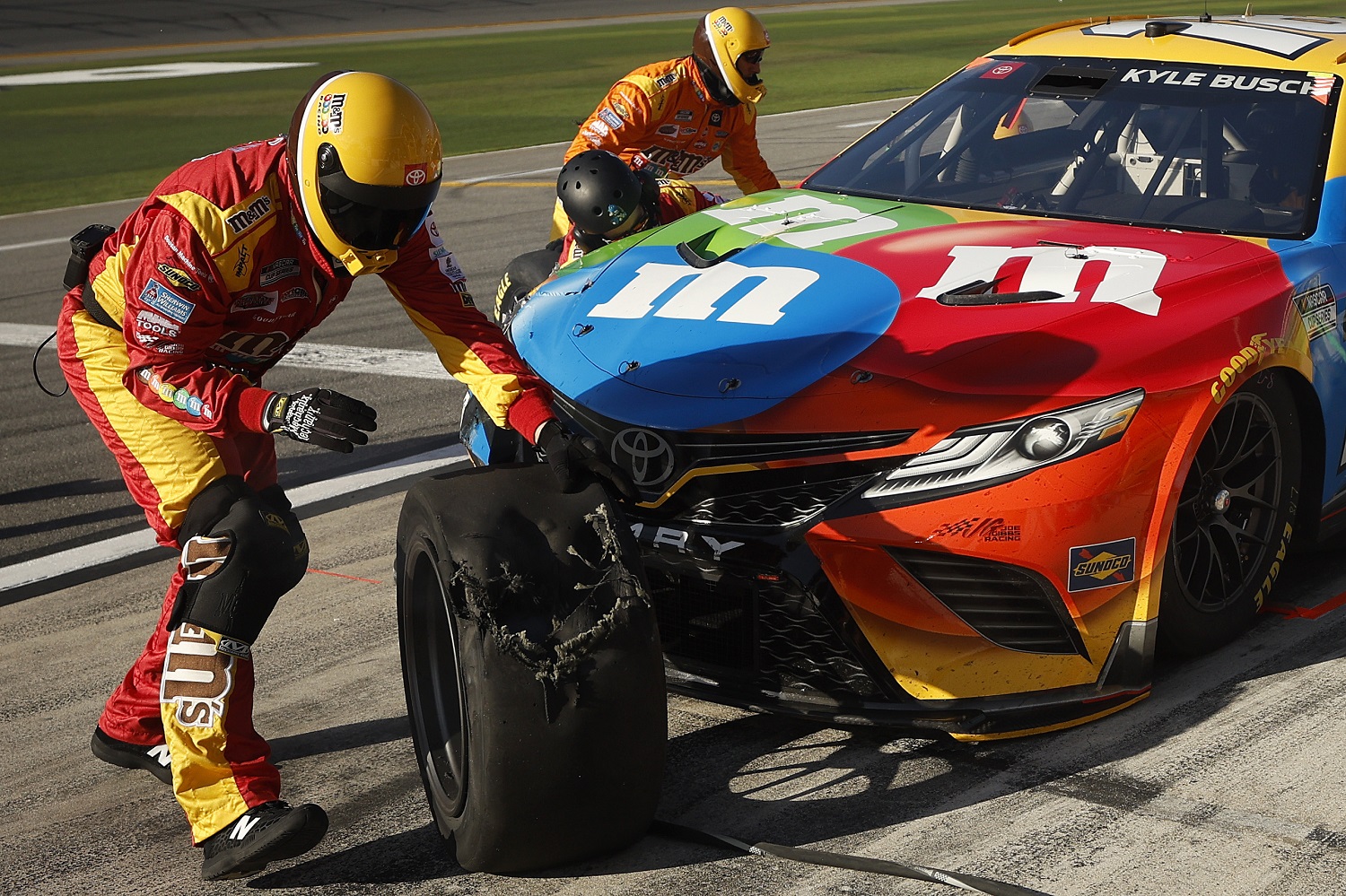
Aside from the fact that the Next Gen car sits low to the ground, there is also a large shield beneath the engine protecting the undercarriage. Combined with the 18-inch wheels, which are larger than in the past, there is no room for an inner liner conducive to allowing drivers to navigate back to the pits with flats.
Joey Logano went spinning in the Daytona 500 and became stuck on flat tires. By the time a tow truck assisted him back to the pits, he had already lost three laps to the rest of the field.
“So, yes, I went bonkers for a little bit,” he said.
Keep in mind that Daytona is a 2.5-mile superspeedway. Fontana last week was a two-mile oval, and the Las Vegas layout is 1.5 miles. That makes it easier for stranded drivers to lose even more laps this weekend over something that used to cost them a single lap.
Unless NASCAR comes up with a solution, the problem gets worse next month. Richmond Raceway (April 3) is three-quarters of a mile. Martinsville (April 9) and Bristol (April 17) are half-mile tracks. The prospect of a flat tire putting a driver seven or eight laps down is very real.
One proposed solution is no solution at all
Message boards, social media, and reader comment sections below articles are full of criticism of NASCAR for not anticipating a rather obvious problem during the development and testing of the Next Gen car that made its competitive debut in the Busch Light Clash at the Los Angeles Coliseum.
One of the most common suggestions is that NASCAR should just assess an automatic one- or two-lap penalty to a car towed back to the pits because of a flat tire.
Unfortunately, it’s not that simple.
First, what should officials do if the flat tires are the result of an incident that causes even more damage? If the crew has to pop the hood and poke around because the car also took a front-end hit and dropped fluids, that is no longer a one- or two-lap proposition.
Second, there’s a fairness issue even if it’s just the matter of a simple flat tire. Cars remaining on the track are experiencing tire wear and are burning fuel. A car having to make up one or two laps instead of the half-dozen or more that it actually missed suddenly gains an edge.
While it’s true that the edge might only amount to finishing 28th as opposed to 36th, every point across the 36-race season is valuable in the standings.
Like Sportscasting on Facebook. Follow us on Twitter @sportscasting19.
